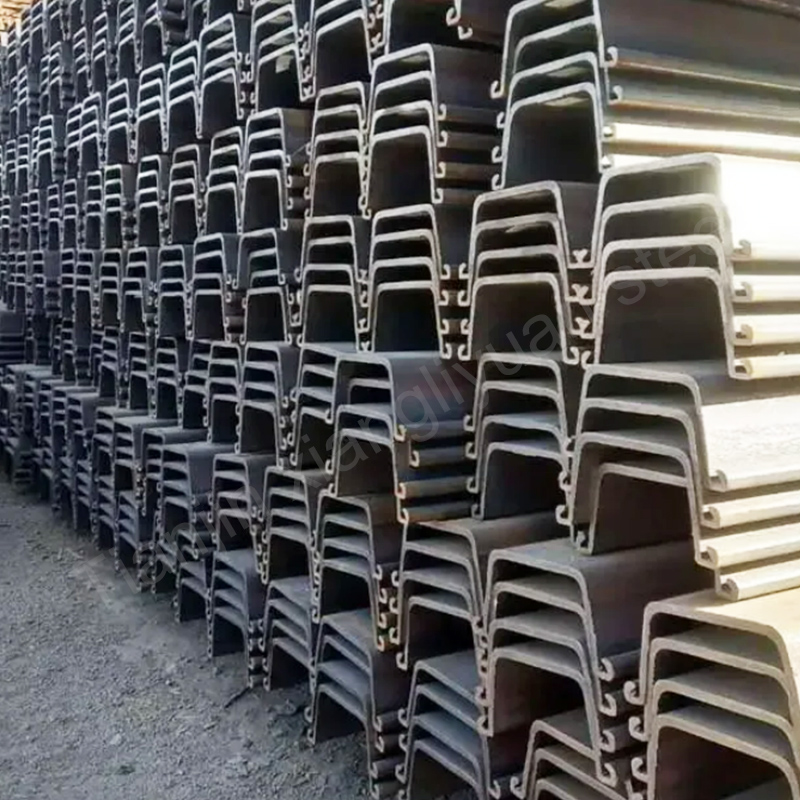
- Steel sheet pile is a steel structure with linkage devices on the edges, and the linkage devices can be freely combined to form a continuous and tight retaining soil or water retaining wall.
- Its advantages are: high strength, easy to drive into hard soil; it can be constructed in deep water, and if necessary, diagonal supports can be added to form a cage. It has good waterproof performance; it can form cofferdams of various shapes as needed and can be reused many times. Therefore, it has a wide range of uses. In permanent structural buildings, it can be used in docks, unloading yards, embankment protection banks, retaining walls, and retaining walls. Earth walls, breakwaters, diversion embankments, docks, gates, etc.; on temporary structures, can be used to retain soil and water in temporary trench excavation for mountain closure, temporary bank expansion, bridge construction, cofferdam construction, and large pipeline laying. , sand blocking, etc.; in flood fighting and rescue, it can be used for flood control, collapse prevention, quicksand prevention, etc.
- Steel sheet pile products are divided into two types according to production technology: cold-formed thin-walled steel sheet piles and hot-rolled steel sheet piles.
(1) Cold-formed steel sheet piles include non-bite type cold-formed steel sheet piles (also called channel plates) and bite-type cold-formed steel sheet piles (divided into L-type, S-type, U-type, and Z-type) . Production process: Thin plates (commonly used thickness 8mm ~ 14mm) are continuously rolled and formed in a cold bending unit. Advantages: less investment in production lines, lower production costs, and flexible product length control. Disadvantages: The thickness of all parts of the pile body is the same, the cross-sectional size cannot be optimized, resulting in an increase in the amount of steel used, the shape of the locking part is difficult to control, the joints are not fastened tightly, and water cannot be sealed, and the pile body is prone to tearing during use.
(2) Hot-rolled steel sheet piles. Hot-rolled steel sheet piles in the world mainly include U-type, Z-type, AS-type, H-type and dozens of specifications. The production, processing and installation processes of Z-shaped and AS-shaped steel sheet piles are relatively complex and are mainly used in Europe and the United States; in China, U-shaped steel sheet piles are mainly used. Production process: It is formed by high-temperature rolling in a section steel rolling mill. Advantages: standardized size, superior performance, reasonable cross-section, high quality, and tight water-proof lock bite. Disadvantages: greater technical difficulty, higher production costs, and inflexible specification series.
Get A Quote Today
Best quality at the lowest price

